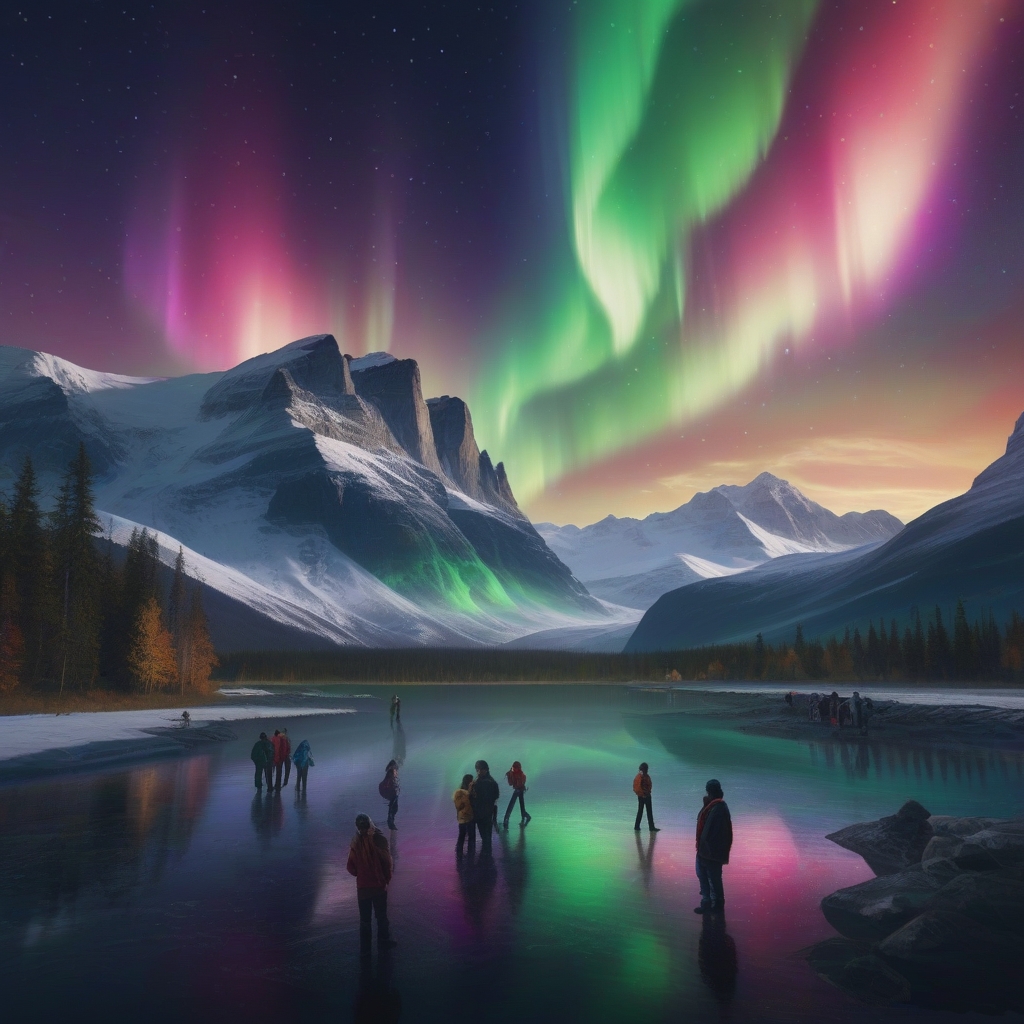The Rise of AI in the Artistic World
In recent years, the intersection of artificial intelligence and art has been a fertile ground for innovation and debate. **Meta**, a tech giant at the forefront of this movement, has once again ignited discussions with its latest AI-generated images of the Northern Lights. These digital creations, shared widely over social media platforms like Threads, have stirred a vibrant debate among users. Are AI-generated visuals a legitimate form of artistic expression, or do they fall short compared to the breathtaking authenticity of real-world phenomena?
Meta’s AI: The Inspiration Behind the Northern Lights Imagery
Meta’s venture into AI-generated art is not new. The company has been utilizing algorithms to produce stunning visuals that mimic nature. The recent focus on the Northern Lights, however, takes this endeavor to a spectacular level. The AI scans thousands of images and analyzes patterns, colors, and structures to produce striking renditions of this natural wonder.
While the technology behind Meta’s AI is impressive, the resultant images are sparking conversation. Enthusiasts argue that AI provides a new medium for both expression and experience—allowing people from various parts of the world to witness phenomena they might never see otherwise. However, there is a faction of skeptics who question whether AI can ever truly capture the essence of the Northern Lights.
The Beauty and Controversy of AI Art
**The fascination with the Northern Lights** lies in their unpredictable, ethereal beauty. These natural light displays, predominantly occurring near polar regions, have inspired countless artists, photographers, and travelers. AI-generated images, while visually appealing, might not convey the full majesty of the auroras—thus sparking a debate on the authenticity and soul of AI art.
The key points of the debate include:
- **Authenticity**: Can an algorithm fully encapsulate the experience and unpredictability of witnessing the Northern Lights live?
- **Accessibility**: Does AI art democratize access to natural wonders for those unable to travel?
- **Artistry**: Should AI-generated images be considered authentic forms of art equivalent to human-created art?
- **Impact on Artists**: How does this trend affect traditional artists who rely on the uniqueness of their vision and techniques?
Authenticity and Experience
Seeing the Northern Lights in person is an awe-inspiring experience—rooted as much in the journey and anticipation as in the display itself. Photographers spend hours, sometimes in harsh conditions, to capture the perfect shot, and their artistry lies not just in the image but in the patience, timing, and skill. AI-generated art, although visually similar, can’t replicate the raw experience of these natural wonders and may miss out on the subtle nuances that make each display unique.
Democratizing Access
On the flip side, AI-generated images make the Northern Lights accessible to a global audience. They allow people to experience the majesty of auroras without traveling to remote, often frigid locations. This democratization of access can be seen as a step towards inclusivity in experiencing global wonders.
Artistry and Creativity
The debate on whether AI-generated images qualify as true art is long-standing. Traditionalists argue that art should stem from human creativity, emotion, and expression—something that a machine lacks. On the other hand, proponents see AI as just another tool, similar to a paintbrush or camera, used to manifest creative vision. They argue that the brain behind programming the AI imbues the final product with its own sense of artistry.
The Impact on Traditional Artists
**Artificial intelligence in art** presents both challenges and opportunities for traditional artists. While it opens new avenues for collaboration and inspiration, it also poses a threat to conventional art forms by potentially devaluing human craft. Artists now face the challenge of distinguishing their work from AI creations in a market increasingly leaning towards digital efficiency and novelty.
A New Frontier for Creation
Rather than viewing AI as a competitor, many artists are embracing AI as a collaborator to push creative boundaries and explore uncharted territories. By integrating technology with human vision, artists can produce innovative works that blend the precision of AI with the emotional depth of human creativity.
The Way Forward
Looking ahead, the path for AI and art is rife with potential. Establishing criteria for evaluating AI-generated art could help balance appreciation for digital creations with the recognition of traditional methods. Ensuring credit is given both to the human mind guiding the algorithms and the technology itself is crucial to creating a harmonious space where both forms of art can coexist.
Conclusion: The Future of AI-Driven Art
Meta’s AI-generated visuals of the Northern Lights are a testament to how far technology has come in replicating and expanding upon natural beauty. They also underscore the need for a continuous, nuanced discourse on the role of AI in artistic expression. In a world increasingly dominated by technology, finding a balance between digital innovation and the preservation of human creative spirit is more critical than ever. Whether AI-generated art will enhance or undermine our appreciation of natural wonders remains an open question—one that propels the ongoing **Meta AI vs. Real Northern Lights Debate**.

Leave a Reply